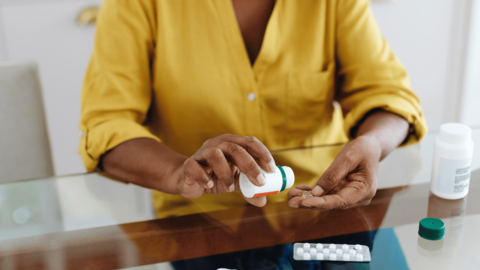For many people recovering from opioid addiction, chronic pain presents a major challenge. Opioids were once the go-to solution, but now, they’re a relapse risk. You may be wondering:
- How can I manage pain without opioids?
- Are there safe, non-addictive medications that actually work?
- What alternative pain treatments are available?
But you don’t have to choose between living with pain and risking relapse. There are proven, non-opioid pain management strategies that can help you stay in recovery while improving your quality of life.
In this guide, we’ll explore safe pain relief options, alternative treatments, and lifestyle changes that actually work.
Step 1: Understanding Pain in Opioid Recovery
Many people develop heightened pain sensitivity after long-term opioid use, a condition called opioid-induced hyperalgesia (OIH). This means:
- Your pain feels worse than it actually is because your nervous system is still healing.
- Your body has reduced natural painkillers (endorphins), making discomfort harder to tolerate.
- Pain gradually improves over time, but proper management is essential.
Key takeaway: Not all pain is permanent—understanding how opioids affect pain perception can help you find the right treatment.
Step 2: Use Non-Opioid Medications for Pain Relief
There are several prescription and over-the-counter (OTC) medications that can help with pain without affecting opioid receptors.
Non-Opioid Prescription Medications
- Low-Dose Naltrexone (LDN) – A medication that reduces inflammation and pain sensitivity. Studies show it helps with fibromyalgia, nerve pain, and autoimmune disorders.
- Gabapentin (Neurontin) & Pregabalin (Lyrica) – Originally designed for seizures, these meds help with nerve pain, sciatica, and post-surgical pain.
- Duloxetine (Cymbalta) & Venlafaxine (Effexor XR) – Antidepressants that help with chronic pain and nerve damage.
- Tizanidine (Zanaflex) & Baclofen – Muscle relaxers that can ease back pain, muscle spasms, and tension headaches.
Talk to your doctor about these options—some work better for nerve pain, while others help with muscle pain or inflammation.
Over-the-Counter (OTC) Pain Relievers
- Ibuprofen (Advil, Motrin) or Naproxen (Aleve) – Reduce inflammation and are great for joint pain, back pain, and headaches.
- Acetaminophen (Tylenol) – Works well for mild-to-moderate pain but doesn’t reduce inflammation.
- Topical creams (Voltaren Gel, Lidocaine patches, Capsaicin cream) – Can help localized pain relief without affecting the whole body.
Pro tip: Using a combination of ibuprofen and acetaminophen has been shown to be as effective as opioids for pain relief.
Step 2: Use Physical Therapy & Exercise to Reduce Pain Naturally
Physical Therapy (PT)
Physical therapy isn’t just for injury recovery—it’s a long-term solution for managing pain. A trained PT can help strengthen muscles, reduce inflammation, and teach movement techniques that reduce pain without medication.
Best for: Back pain, arthritis, post-surgical recovery, nerve pain, and mobility issues.
Low-Impact Exercise for Pain Relief
If traditional workouts feel impossible, try low-impact exercises that strengthen the body without causing additional pain.
- Swimming & water therapy – Reduces joint stress and eases muscle pain.
- Yoga & stretching – Helps nerve pain, stiffness, and posture-related pain.
- Walking – Improves circulation, reduces stiffness, and helps with overall pain tolerance.
The key is to move in a way that feels good—small, consistent activity is better than no movement at all.
Step 3: Try Alternative & Holistic Pain Management
If medications and PT aren’t enough, alternative therapies can add another layer of pain relief.
Acupuncture & Chiropractic Care
- Acupuncture can help nerve pain, migraines, and back pain.
- Chiropractic care may help with spinal alignment and tension headaches.
Mind-Body Therapies
- Meditation & deep breathing – Help reduce stress-related pain.
- Cognitive Behavioral Therapy (CBT) – Can help reframe pain perception and reduce the emotional distress of chronic pain.
Nerve Blocks & Injections
- Cortisone injections for joint pain or back pain.
- Nerve blocks for sciatica or neuropathy.
These treatments are non-opioid and can provide months of relief at a time.
Step 4: Have a Relapse Prevention Plan in Place
Since chronic pain is a major relapse trigger, having a plan in place BEFORE the pain gets severe can help prevent risky decisions.
- Talk to a Doctor in Advance – If you ever need surgery or emergency pain treatment, make sure your medical team knows about your addiction history so they can adjust your pain management plan.
- Use a Pain Management Contract – If you ever must take opioids (like after surgery), working with a doctor to create a short-term, supervised plan can lower the risk of relapse.
- Stay Connected to Support – If you start feeling overwhelmed, isolated, or frustrated by pain, reach out to a sponsor, therapist, or recovery group.
Remember: You don’t have to push through pain alone. There are safe ways to manage it without risking your recovery.
Need Help Managing Chronic Pain in Recovery? QuickMD Can Help
If you’re in recovery but struggling with pain management, QuickMD’s online doctors can help you find a safe, non-opioid treatment plan that works for you.
Why Choose QuickMD?
- Same-day online prescriptions for non-opioid pain medications like LDN, gabapentin, and muscle relaxers.
- Licensed addiction specialists available 7 days a week.
- Personalized treatment plans to manage pain while staying in recovery.
- Private, virtual appointments from home—no in-person visits needed.
Find Pain Relief Without Risking Your Recovery
You don’t have to choose between living in pain or risking relapse. If you need a safe and effective pain management plan, QuickMD’s doctors are here to help. Schedule an appointment with QuickMD today.




